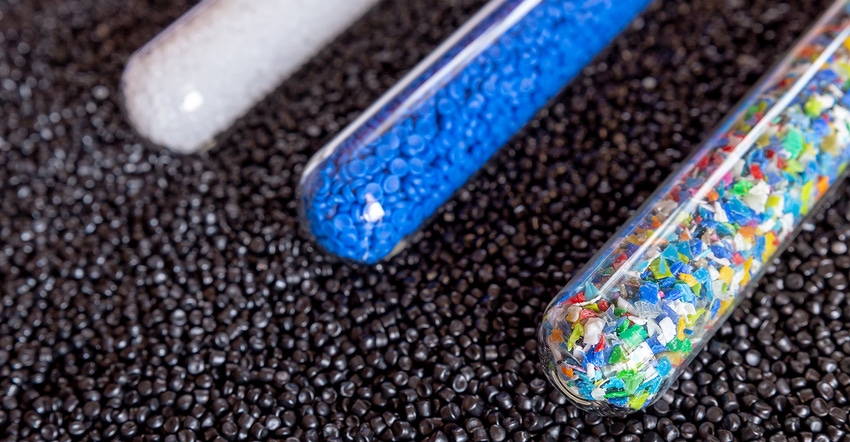Resin Price Report: Booming Export Market Hurts Domestic Supply
Resin producers continue to funnel incremental resin supplies into the red-hot export market, leaving scant availability for spot domestic sales.
September 21, 2023

Activity in the spot resin markets hit the mute button last week, as buyers and sellers seemed preoccupied while many attended industry events in Houston and Las Vegas, reports the PlasticsExchange in its Market Update. The week of Sept. 11 was marked by crude oil prices climbing past $90/bbl, the highest level since November 2022, and gas stations across the land wasted no time reflecting the increase at the pump. Meanwhile, resin producers continued to funnel incremental resin supplies into the red-hot export market, leaving scant availability for spot domestic sales.
Processor push-back brings some price relief
Prices for both polyethylene (PE) and polypropylene (PP) had made meaningful advances during the past several weeks, noted the PlasticsExchange, and while additional disruptions have emerged to further affect supplies, processors pushed back and spot prices relaxed a bit as a result.
August PE contracts endured a $0.03/lb price increase and there is a $0.05/lb increase nominated for September contracts. PP contracts followed polymer-grade propylene (PGP) monomer down a half-cent in August; volatile monomer costs ran up sharply during the first week of September and gave back a chunk of their gains this past week, but are still poised to secure a moderate gain. At the moment, that would amount to nearly a nickel.
Nova Chemicals declares force majeure
Nova Chemicals declared a force majeure on Sept. 14 for high-density (HD) and low-density (LD) PE resins produced at its facilities in Ontario, Canada. The announcement attributed the disruption to an unplanned outage at its nearby Corunna cracker, which supplies the ethylene feedstock for the Moore and St. Clair sites. The Moore facility has an annual PE production capacity of 840 million pounds; the smaller St. Clair site has an annual PE capacity of nearly 400 million pounds. If this seems a bit like déjà vu, you would be correct: Nova declared a force majeure at this same facility for similar reasons back in March. This comes as CP Chem remains on its force majeure for the past month on HDPE at its Orange, TX, facility with an annual capacity of 900 million pounds. Meanwhile, on the PP front, Ineos declared a force majeure on homo-polymer (Ho) PP production at its Carson, CA, facility due to complications associated with the acquisition of PGP feedstock. What’s important to keep in mind about this particular incident is that it affects the only PP production facility located west of the Rocky Mountains. The Carson facility has annual PP production capacity of approximately 500 million pounds.
These force majeures are not isolated incidents but part of a larger, more complex petrochemical industry issue currently straining the supply chain. Other recent upstream disruptions include Dow Chemical's propane dehydrogenation (PDH) unit that makes PGP monomer in Freeport, TX, and Enterprise PDH #1 in Chambers County, TX, as well as the recent shutdowns of two of the nation's largest refineries because of a fire, BASF/TotalEnergies in Port Arthur, TX, and Marathon in Garyville, LA.
PE resin grades give back a penny
Despite all of the upstream action, the PE market was relatively tepid and completed volumes at the PlasticsExchange trading desk fell short of its average turnover. The decline could be attributed somewhat to producers diverting material into the export market, thus limiting spot availability while taking a more direct route to converters and bypassing some reseller channels, mused the PlasticsExchange. All PE resins grades gave back a penny. Domestic business was sluggish, but export orders picked up the slack. Linear-low-density (LLD) PE was the most-traded PE resin last week, with Injection and Rotomolding grade materials outselling Film grades.
Preliminary data released by the American Chemistry Council (ACC) showed August operating rates approaching 90% of capacity, the second highest monthly volume of PE in history. It was an impressive performance, but not when compared to total PE sales, which blew away all historic monthly records, according to the PlasticsExchange. This included the third straight month of record exports coupled with the second-best tally of domestic sales since May 2022. All told, upstream PE inventories saw a substantial reduction to the lowest level since March. For more detailed statistics, readers are encouraged to subscribe to the ACC.
Relatively light spot supply of PP
Spot PP trading was good, but still somewhat disappointing as some processors took a step back from the volatile market amid recent monomer and resin production issues. Spot availability was relatively light and main dealings at the PlasticsExchange were evenly split between Prime copolymer PP and HoPP, with a few off-grade transactions thrown in for good measure. Spot Prime PP prices pulled back $0.015/lb, relieving a chunk of the previous week’s gains, but remaining up a cent in September and still sitting a few cents above the early summer low. September PP contracts will see a cost-push price increase that currently targets close to $0.05/lb.
Preliminary August supply demand data released by the ACC showed improved PP operating rates, now above 80% for two consecutive months, which yielded the most PP production since August 2021. Sales were strong, too, the most since December 2020, and exports cracked the 100 million pound mark, the highest since the COVID-related PP purge of May/June 2020. Domestic PP sales were also healthy and the end result was a small reduction in producers’ resin inventories.
Read the full Market Update, including news about PGP pricing and energy futures, on the PlasticsExchange website.
About the Author(s)
You May Also Like




